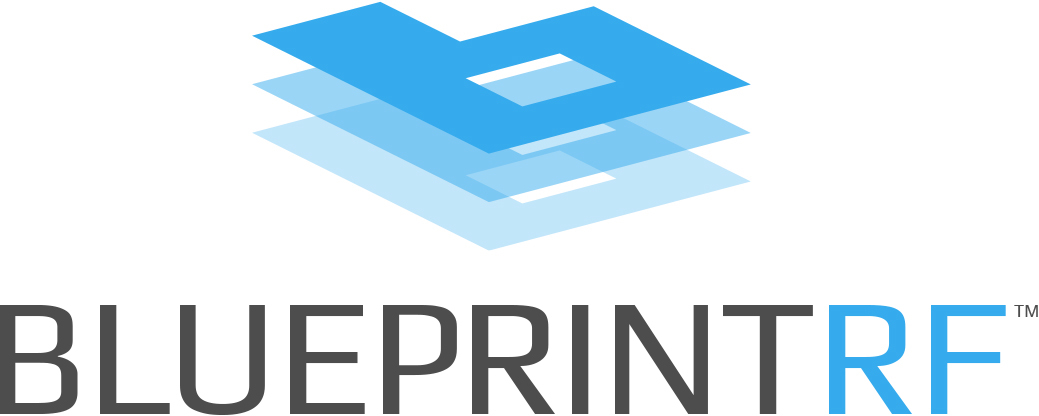Dynamic pricing has become an essential strategy for hotels. In a saturated hospitality market, dynamic pricing is pivotal for increasing bookings, optimizing revenue, enhancing customer satisfaction, and gaining a competitive edge. The utilization of a dynamic pricing strategy in hotels, however, takes many shapes. To successfully leverage dynamic pricing, hotels need to combine foresight into supply & demand and a touch of creative thinking.
What is Dynamic Pricing in Hotels?
Dynamic pricing, or demand-based pricing, is a strategy where hotel room rates are adjusted in real-time based on current market demand and other influencing factors. Unlike static pricing, where rates remain constant, dynamic pricing in the hotel industry allows hotels to increase rates during high-demand periods and decrease them when demand is low. This flexibility ensures that room rates are always competitive and aligned with market conditions.
So, what are the primary benefits of dynamic pricing in hotels? There are several key advantages that make this tactic an essential marketing strategy in any hotel’s tactical toolkit.
- Higher Occupancy Rates: Adjusting prices based on demand helps maintain full occupancy, even during off-peak seasons.
- More Competitive Rates: Real-time adjustments enable hotels to stay competitive with local market pricing.
- Increased Customer Satisfaction: Fair and transparent pricing enhances guest perceptions and encourages repeat business.
- Maximized Revenue: By capitalizing on peak demand periods, hotels can significantly boost their overall revenue.
- Improved Inventory Management: Dynamic pricing allows for better allocation of room inventory based on demand forecasts.
- Enhanced Market Insights: Continuous pricing adjustments provide valuable data on customer behavior and market trends, informing future strategies.
Additionally, by using dynamic pricing, hotels can offer targeted discounts or special offers to loyal customers, further enhancing guest loyalty. By continuously monitoring competitor pricing and market trends, hotels can position themselves as attractive options for potential guests, amplifying their offerings and increasing their market share.

How to Develop a Dynamic Pricing Strategy for Hotels
Integrating a dynamic pricing strategy into your hotel’s marketing and operations is essential to run a hotel successfully. With a structured approach, hotels can effectively optimize room rates, attract new bookings at opportune times, and capitalize on current demand and market conditions.
1. Set Price Guidelines
Setting price guidelines is key to establishing a clear framework for how room rates will adjust via dynamic pricing. Begin by identifying key pricing benchmarks for each room type, such as the minimum price — which ensures costs are covered even during low-demand periods — and the rack rate — which is the highest price charged during peak demand.
Next, consider other pricing points like:
- Starting Price: The initial rate offered for each room type.
- Sales Price: The rate used for promotions and special offers.
- Equilibrium Price: The price point where supply meets demand.
- Resistance Price: The maximum price guests are likely to accept without booking.
These benchmarks create a structured approach to pricing decisions, balancing flexibility with profitability. Hotels should also consider seasonal variations, local events, and historical booking patterns to refine these guidelines. By establishing clear and comprehensive price guidelines, hotels can effectively respond to market changes, ensuring that room rates are competitive and aligned with business objectives.
2. Understand Demand
Next, hotels need to understand demand. This step of the process involves analyzing historical data to identify patterns and trends in guest bookings, such as past occupancy rates, booking lead times, and guest demographics.
Start by segmenting the year into high, shoulder, and low seasons, taking into account factors such as holidays, local events, and weather conditions that influence travel behavior. Additionally, consider external factors like economic conditions and competitor actions that may impact demand. This data-driven approach enables hotels to anticipate demand fluctuations and adjust pricing strategies proactively.
3. Monitor Competitor Pricing
Keeping an eye on your competitors’ prices is a critical component of a dynamic pricing strategy for hotels — especially during peak and off-peak periods. To monitor competitor pricing, hotels should regularly track the room rates of nearby hotels that share similar target demographics and offerings. By understanding how competitors price their rooms (including surrounding Airbnbs, VRBOs, and other lodging options), hotels can adjust their pricing strategies to attract more guests.
Effective price monitoring heavily relies on intelligence tools and software to provide insights into competitors’ pricing strategies. These tools can automate the process of gathering data, allowing hoteliers to quickly identify trends and respond to changes in the market.
In addition to room rates, consider other factors such as competitors’ promotional offers, packages, and cancellation policies. This analysis helps you position your hotel effectively, ensuring that your rates are not only competitive but also aligned with the specific value and services you provide.
4. Set Initial Room Rates
Setting initial room rates is the process of establishing baseline rates for each room type well in advance, typically a year ahead. These initial rates should reflect a balance between historical data, market trends, and projected demand.
Begin by analyzing past performance data, including occupancy rates, average daily rates (ADR), and revenue per available room (RevPAR), to identify patterns and benchmarks. Then, incorporate insights from your demand analysis and competitor pricing to ensure your initial rates are competitive and aligned with market expectations.
Also consider external factors like upcoming events, holidays, and economic conditions that might influence demand during specific periods. Setting initial rates with these variables in mind allows for strategic planning and flexibility — enabling your hotel to capitalize on high-demand periods while remaining attractive during slower times.
5. Utilize Dynamic Pricing Tools
Most hotels use specific tools for dynamic pricing. These pieces of software combine advanced algorithms, artificial intelligence, and machine learning to analyze vast amounts of data, enabling hotels to adjust room rates in real-time based on current market conditions, demand fluctuations, and competitor pricing.
Start by selecting a dynamic pricing tool that integrates seamlessly with your existing property management system (PMS) and channel managers. PMS integration makes sure that rate adjustments are automatically applied across all distribution channels, maintaining consistency and accuracy. The right dynamic pricing tool can also automate routine pricing tasks, freeing up time for revenue managers to focus on strategic planning and other critical areas.
6. Regularly Review and Adjust Rates
Regularly reviewing and adjusting room rates is the crucial final step for maintaining dynamic pricing strategies. This ongoing process ensures that your pricing remains aligned with current market conditions and demand fluctuations, maximizing both occupancy and revenue.
Establish a routine for monitoring performance indicators like occupancy rates, ADR, and RevPAR. Then, analyze these metrics alongside real-time data from your dynamic pricing tools to identify trends and opportunities for adjustment.

Dynamic Pricing Software & System Integration
Implementing dynamic pricing software requires knowing what solutions best accommodate your hotel’s infrastructure. Here are a few key types of dynamic pricing software, plus some features you should make sure to incorporate.
Types of Dynamic Pricing Software
- AI-Powered Solutions: These tools, such as Pricepoint and BEONx, use artificial intelligence to analyze market data and automatically adjust prices, helping hotels stay competitive by responding swiftly to demand changes.
- API-Based Tools: Solutions like Makcorps Hotel Pricing API provide real-time price comparison data from numerous online travel agencies, enabling hotels to fine-tune pricing strategies based on comprehensive market insights.
- Comprehensive Platforms: Platforms such as Competera and Reactev offer a wide range of features, including integration with multiple data sources, advanced pricing rules, and real-time analytics, to provide a holistic approach to dynamic pricing management.
- Multichannel and Multi-Store Tools: These solutions, particularly Reactev, allow hotels to manage pricing across various channels and locations, ensuring consistency and optimal pricing strategies tailored to each market segment.
Key Features to Consider
- Integration Capabilities: Ensure the software can seamlessly integrate with existing PMS and channel managers to facilitate automated rate updates across all distribution channels.
- Customizable Pricing Rules: Look for tools that allow you to set specific pricing rules based on various factors, such as seasonality, occupancy levels, and competitor rates.
- Real-Time Data Analytics: Choose software that provides real-time insights into market trends, competitor pricing, and customer behavior, enabling more informed pricing decisions quickly.
- User-Friendly Interface: A straightforward, intuitive interface is essential for easy navigation and efficient use, allowing staff to quickly adapt to the software without extensive training.
- Reporting and Forecasting Tools: Opt for solutions that offer robust reporting features and forecasting capabilities. This allows you to analyze past performance and predict future demand trends for better pricing strategies.
- Customer Support and Training Resources: Consider the availability of customer support and training materials to assist your team in maximizing the software’s potential and ensuring a smooth implementation process.
Implementation Process
Additionally, implementing dynamic pricing software requires a strategic approach to ensure seamless integration and effective use. It’s critical to select a tool that aligns with your hotel’s specific needs and budget. Collaborate with your software provider to integrate the system with your existing PMS and channel managers, ensuring automated rate updates across all platforms.
It’s likely your team will need to configure or calibrate the software with your established pricing rules and guidelines. Depending on the size of your hotel, this process may involve comprehensive training for your staff to familiarize them with the new system. A thorough implementation process sets the foundation for leveraging dynamic pricing to enhance revenue management.
Blueprint RF, Your Trusted Technology Partner
Blueprint RF is an industry leader in managed WiFi and connectivity solutions tailored specifically for the hospitality industry. By delivering secure, high-speed internet access and user monitoring, Blueprint RF supports strategic investments in dynamic pricing and related software integrations. The company’s customizable networks and advanced analytics capabilities help ensure that hotels can seamlessly integrate dynamic pricing tools, leveraging reliable connectivity to optimize revenue management strategies. Learn more about teaming up with a trusted technology partner like Blueprint RF by contacting us today.











